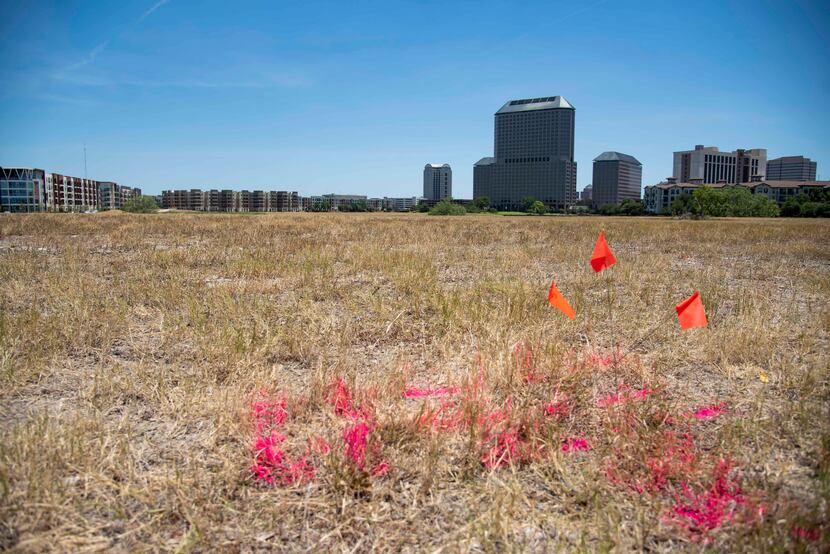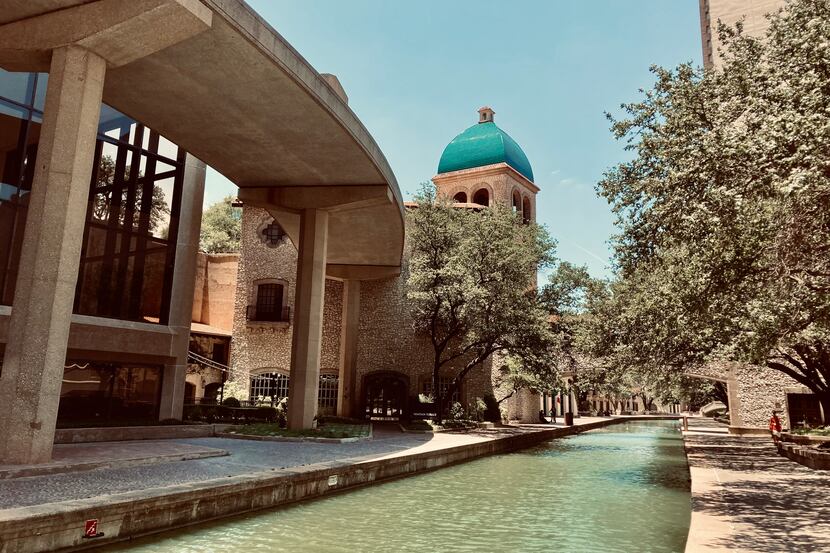Just-approved zoning for an Irving corporate campus and mixed-use development will fill a strategic vacant block in Las Colinas.
The planned real estate project just east of Carpenter Freeway is located on one of the last building sites in the Las Colinas Urban Center — a development that builders had hoped would one day rival downtown Dallas.
In the 1970s, developers of the 12,000-acre Las Colinas community located between the DFW International Airport and Dallas set out to create a new town in the Trinity River bottoms. Five decades later, Las Colinas is one of Texas’ largest employment centers and residential districts.
At the heart of the project is the community’s centerpiece, the 950-acre Urban Center.
It’s home to Irving’s signature wild mustangs sculpture that draws thousands of visitors a year.
Today, the Urban Center includes more than 6 million square feet of office space, retail and about 9,000 apartment, condominium and townhouse units. It’s the site of the Irving Convention Center and the Toyota Music Factory entertainment and restaurant complex.
Early architectural renderings of the district show dozens of towers and homes surrounding the 125-acre Lake Carolyn.

“This vision was really mixed-use, which it has ultimately become,” said John Carpenter III, whose father Ben was the creator of Las Colinas and the Urban Center. “With office, residential, retail and entertainment, it’s got all the elements in that original idea.
“His vision was tilted more toward office and not as much residential,” Carpenter said. “But what has unfolded has been a result of the market.”
Next year, Las Colinas will celebrate its 50th anniversary since Dallas businessman Ben Carpenter started the community on his family’s El Ranchito de las Colinas — the Little Ranch in the Hills.
“They put this whole project together and planned it out in the 1971 to 1973 range and unveiled the master plan in 1973,” said Tim Glass, director of strategic planning at the Las Colinas Association. “The upfront investment was tremendous.
“They were taking half of modern Las Colinas out of the flood plain of the Elm Fork of the Trinity River,” he said. “It was something that would probably never be done today.”
Carpenter, who died in 2006, and his construction and development team dug Lake Carolyn for the fill dirt needed to create a system of unobtrusive levees separating the river from the Urban Center.
“We are protected from a 500-year flood,” Glass said. “I’ve seen a few figures that put the upfront investment in Las Colinas at over $200 million in 1974. Today, that would be close to $1 billion.”
Part of the original Urban Center construction included a system of canals that aren’t visible from nearby freeways and have lost significance in recent years. Ben Carpenter built the waterways that wind between office towers on the east side of State Highway 114 after seeing the canals of Europe.
“He traveled the world to places in Italy that had canals,” John Carpenter said. “He saw the uniqueness and wanted to create those that had shops and restaurants.”
The developer even bought traditional gondolas to travel the Las Colinas waterways, along with water taxis. “He had three or four of those that he got commissioned in Venice,” Carpenter said.
Over the years, the Venetian gondolas were sold off, and the Las Colinas canals fell into disuse. Many of the restaurant and retail storefronts along the canal are vacant.
Glass said the Las Colinas Association is looking at ways to revive the canals.
“We want to make sure it’s a big part of the future of Las Colinas just like it was in the past,” Glass said. “It’s very active, with people running and walking dogs.
“We believe there is a market there but it’s got to be the right mix of tenants and the visibility to draw attention,” he said. “We are looking at programming and events.”

Construction on the Las Colinas Urban Center has never really stopped since the development launched.
“Before COVID hit, we were looking at a daytime population of 30,000 in the Urban Center and 155,000 in all of Las Colinas,” Glass said.
Currently there is about a half million square feet of office space under construction and close to 1,000 apartment units being built or planned to start soon. And two new hotel projects are on the way.
The just-zoned 29-acres at the north end of Lake Carolyn will be the site of a 1.6 million-square-foot office campus plus more apartments and retail.
Developer KDC says 4,000 people will work in the first phase of the office project, but so far it won’t identify the employer. California-based Wells Fargo has been named by real estate brokers as the occupant of what will be one of North Texas’ largest new employment centers.
Only about 65 acres of vacant land remain in the Urban Center, not counting the planned projects, said Bobby Stewart with CSE Commercial Real Estate.
“There should be about 25 or so acres left if the planned deals get built,” Stewart said.


